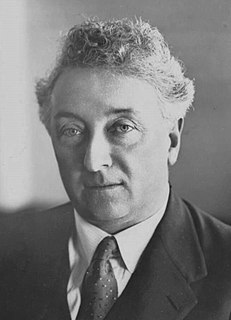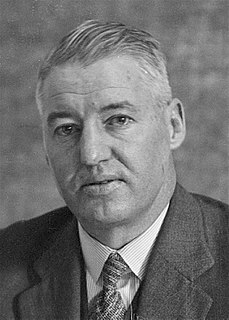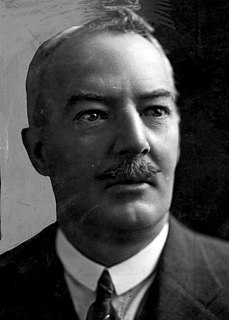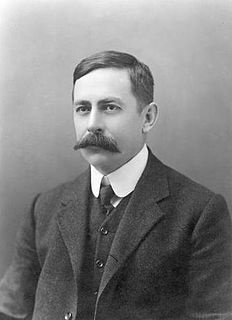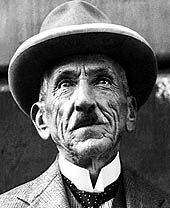| |||||||||||||||||||||||||||||||
| |||||||||||||||||||||||||||||||
All 75 seats in the Australian House of Representatives 38 seats were needed for a majority | |||||||||||||||||||||||||||||||
|---|---|---|---|---|---|---|---|---|---|---|---|---|---|---|---|---|---|---|---|---|---|---|---|---|---|---|---|---|---|---|---|
| |||||||||||||||||||||||||||||||
| |||||||||||||||||||||||||||||||
Federal elections were held in Australia on 12 October 1929. All 75 seats in the House of Representatives were up for election, but there was no Senate election. The election was caused by the defeat of the Bruce-Page Government in the House of Representatives over the Maritime Industries Bill, Bruce having declared that the vote on the bill would constitute a vote of confidence in his government.

Elections in Australia take place periodically to elect the legislature of the Commonwealth of Australia, as well as for each Australian state and territory. Elections in all jurisdictions follow similar principles, though there are minor variations between them. The elections for the Australian Parliament are held under the federal electoral system, which is uniform throughout the country, and the elections for state and territory Parliaments are held under the electoral system of each state and territory.

The House of Representatives is the lower house of the bicameral Parliament of Australia, the upper house being the Senate. Its composition and powers are established in Chapter I of the Constitution of Australia.

The Senate is the upper house of the bicameral Parliament of Australia, the lower house being the House of Representatives. The composition and powers of the Senate are established in Chapter I of the Constitution of Australia. There are a total of 76 Senators: 12 are elected from each of the six states regardless of population and 2 from each of the two autonomous internal territories. Senators are popularly elected under the single transferable vote system of proportional representation.
Contents
With senators having fixed six-year terms, the terms of those senators elected in 1926 were not due to expire until 1932. Under the Constitution of Australia, no election for their replacement could occur more than a year prior to their terms expiring (except in the case of a double dissolution), so it was not possible to hold a half-Senate election in 1929. This was the first Commonwealth election for the House of Representatives alone.

The Constitution of Australia is the supreme law under which the government of the Commonwealth of Australia operates, including its relationship to the States of Australia. It consists of several documents. The most important is the Constitution of the Commonwealth of Australia, which is referred to as the "Constitution" in the remainder of this article. The Constitution was approved in a series of referendums held over 1898–1900 by the people of the Australian colonies, and the approved draft was enacted as a section of the Commonwealth of Australia Constitution Act 1900 (Imp), an Act of the Parliament of the United Kingdom.

A double dissolution is a procedure permitted under the Australian Constitution to resolve deadlocks in the bicameral Parliament of Australia between the House of Representatives and the Senate. A double dissolution is the only circumstance in which the entire Senate can be dissolved.
In the election, the incumbent Nationalist–Country coalition led by Prime Minister Stanley Bruce, was defeated by the opposition Labor Party under James Scullin. Labor won with its then largest-ever majority in the federal parliament, but held only a minority of Senate seats as a result of the House-only election.
The Coalition is an alliance of centre-right political parties that forms one of the two major groupings in Australian federal politics. Its main opponent is the Australian Labor Party (ALP), and the two forces are often regarded as operating in a two-party system. The Coalition has been in government since the 2013 federal election. The party is currently led by Scott Morrison as Prime Minister of Australia since August 2018.

Stanley Melbourne Bruce, 1st Viscount Bruce of Melbourne, was the eighth Prime Minister of Australia, in office from 1923 to 1929. He made wide-ranging reforms and mounted a comprehensive nation-building program in government, but his controversial handling of industrial relations led to a dramatic defeat at the polls in 1929. Bruce later pursued a long and influential diplomatic career as High Commissioner to the United Kingdom (1933–1945) and chairman of the Food and Agriculture Organization (1946–1951).

The Australian Labor Party is a major centre-left political party in Australia. The party has been in opposition at the federal level since the 2013 election. Bill Shorten has been the party's federal parliamentary leader since 13 October 2013. The party is a federal party with branches in each state and territory. Labor is in government in the states of Victoria, Queensland, Western Australia, and in both the Australian Capital Territory and Northern Territory. The party competes against the Liberal/National Coalition for political office at the federal and state levels. It is the oldest political party in Australia.
It was the only federal election in Australia's history at which no sitting members retired. It also saw the defeat of Prime Minister Stanley Bruce in his own seat of Flinders; the first time that a serving prime minister had lost his own seat at an election. That would not occur again until 2007, when John Howard lost his seat.

The Division of Flinders is an Australian Electoral Division in Victoria. The division is one of the original 65 divisions contested at the first federal election. It is named for Matthew Flinders, the first man to circumnavigate Australia, and the person credited with giving Australia its name.

John Winston Howard, is an Australian former politician who served as the 25th Prime Minister of Australia from 1996 to 2007. He is the second-longest serving Australian Prime Minister, behind only Sir Robert Menzies, who was in office for over 18 years. Howard was leader of the Liberal Party from 1985 to 1989 and from 1995 to 2007.







